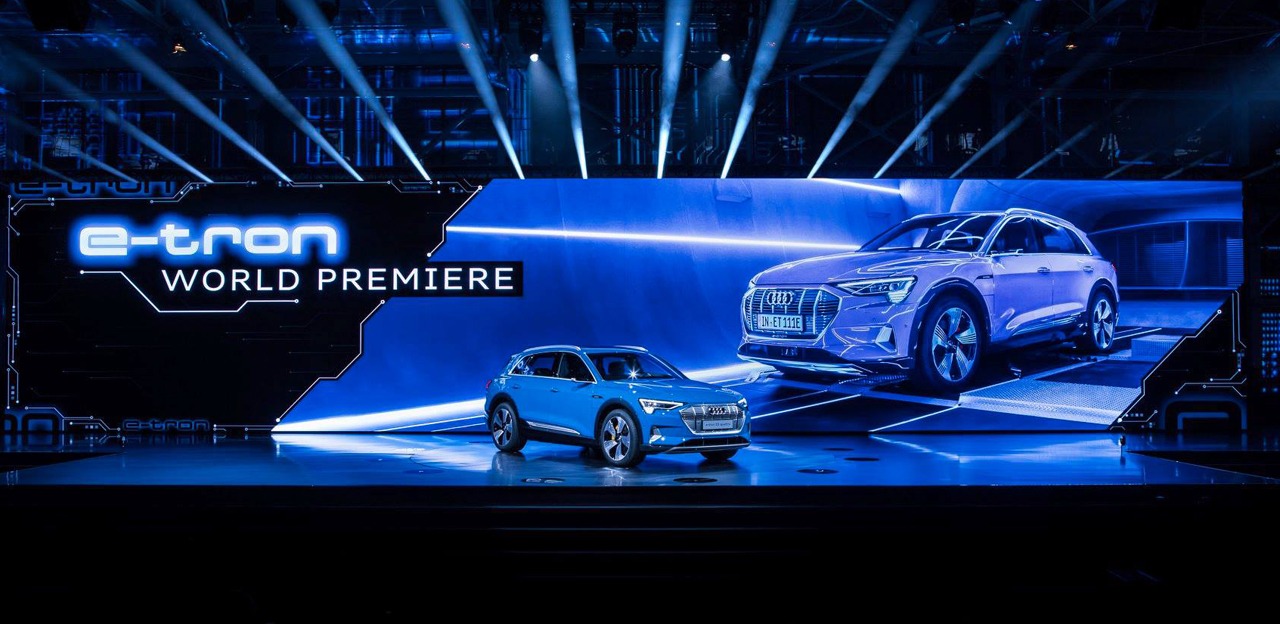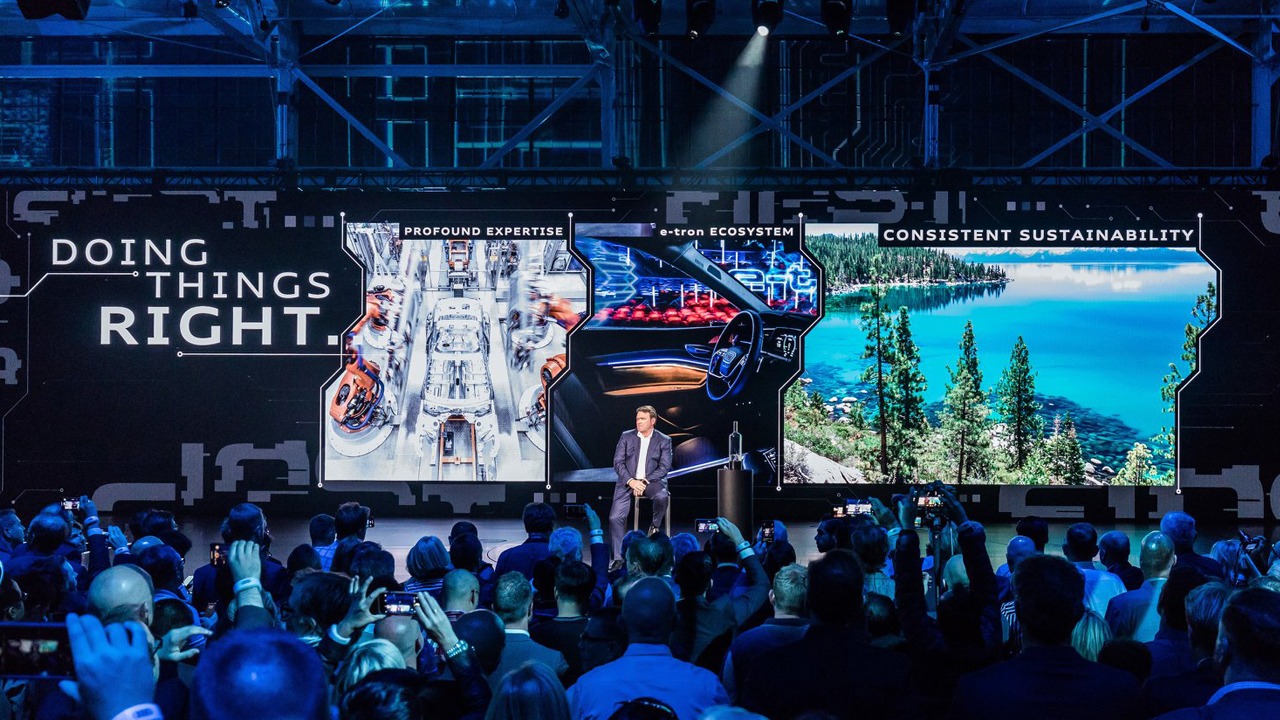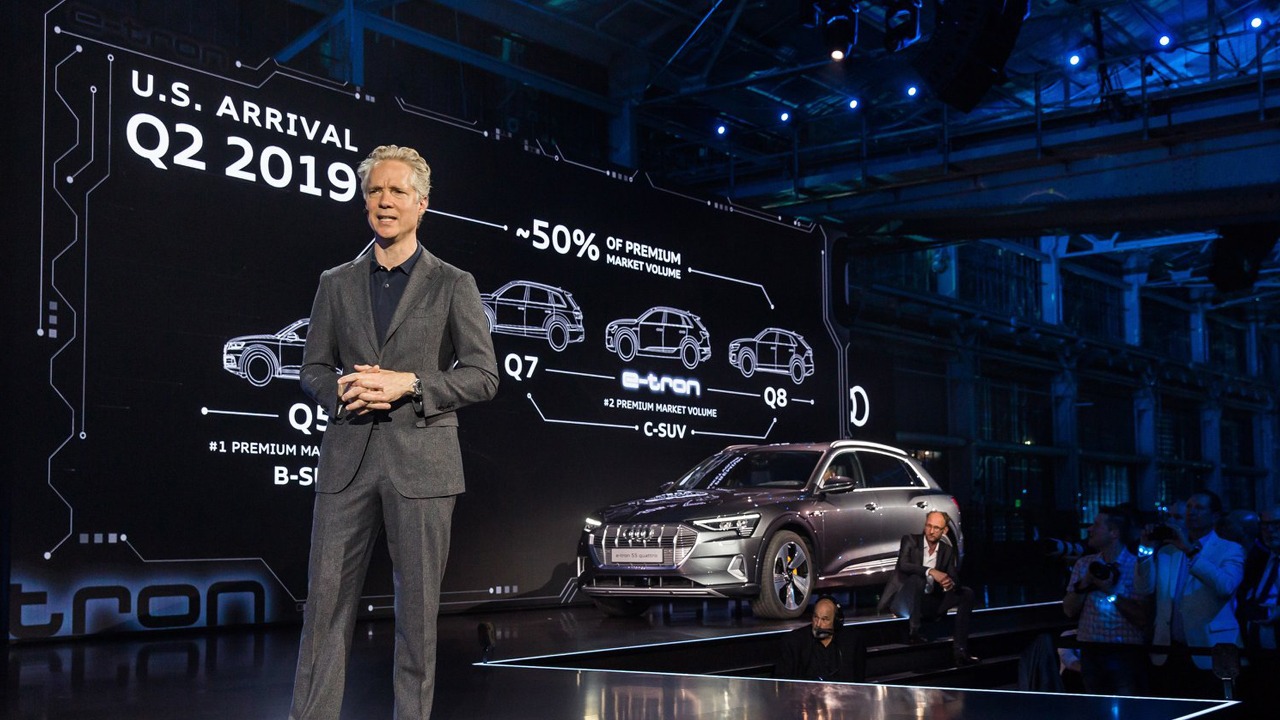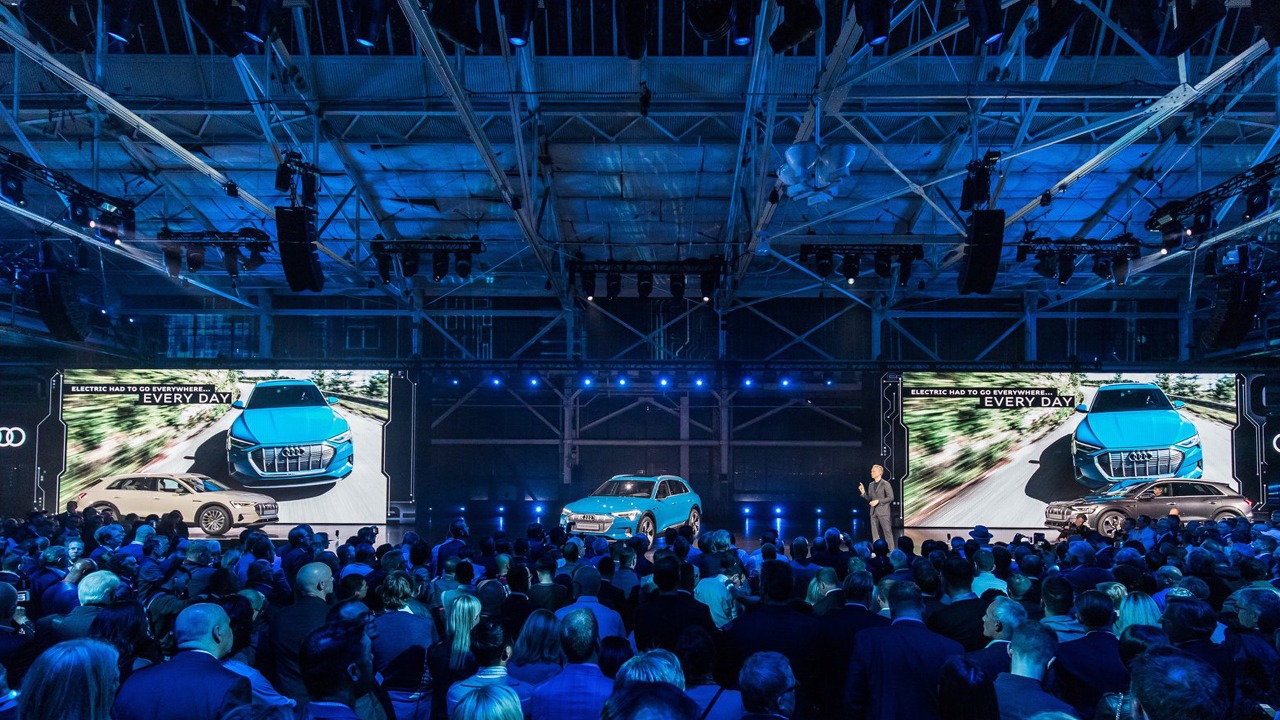Electric goes Audi goes Ventuz
| Date: 6th November 2018 |
| Customer: Audi, Agency: Rayd, Location: San Francisco |
| Event: Events, Presentations |
| Technology: Data Visualization, Graphic Design, Video Wall |
In September of 2018, automotive manufacturer Audi hosted an event in San Francisco titled “The Charge” in order to promote electric mobility across the globe. The production duo Creators/Rayd was responsible for creating high-end real-time content for the stage presentations using their favorite tool: Ventuz. The team used the latest features of Ventuz X to give the visuals a unique and sophisticated look.
The event featured four different presentations focusing on strategy, technology, design and sales of the Audi e-tron series. One of the major tasks was to bring many images, video material, and 3D models of the e-tron cars into a fluent real-time environment to visualize technological innovation and design characteristics. A lot of work went into optimizing the 3D models for real-time use and creating different versions of them to also allow X-Ray visuals. By using subtle animations, the design team was able to effectively guide the audience’s eyes across the content to create a compelling storyline.
The Charge was one of the first projects for which Creators/Rayd utilized Ventuz X, the latest version of Ventuz, and the team really enjoyed the production experience. “We are in love with the new particle system”, said Oliver Grimm of Crearors/Rayd. “It offers extremely fast and flexible ways to give your visuals that extra design edge. And unlike other solutions we have used in the past, the performance of these real-time particles is stunning.” The team also made heavy use of spline-based animations, another new feature of Ventuz X.
Next to electric acceleration, connected mobility was an important topic as well. This refers to intelligent driving assistants and security systems. In this presentation segment, real-time animations showed the vehicle inside the digital network and depicted different driving scenarios. With a reduced and elegant design, bold lettering and sharp contrasts, the visuals perfectly accompanied each speaker.
All of this was displayed at 6400 by 1280 pixel on a kinetic projection wall which could be separated in the middle and opened like a sliding door. Adjusting the content to this motion was easily done using timed animations inside of Ventuz. The software’s real-time nature played a critical role especially during setup on site, when most of the client’s requests for changes came in. With Ventuz, these could be implemented within minutes.







